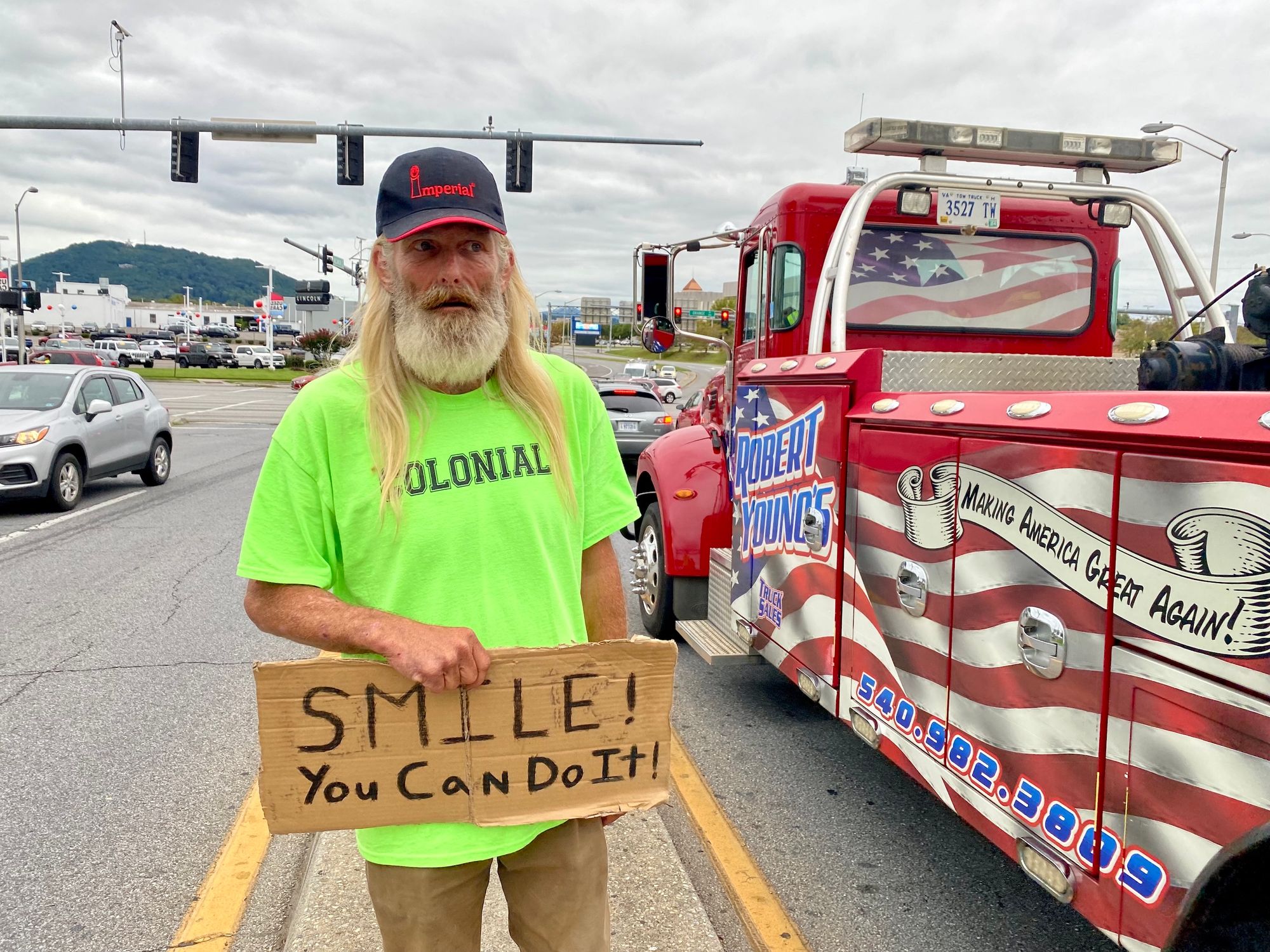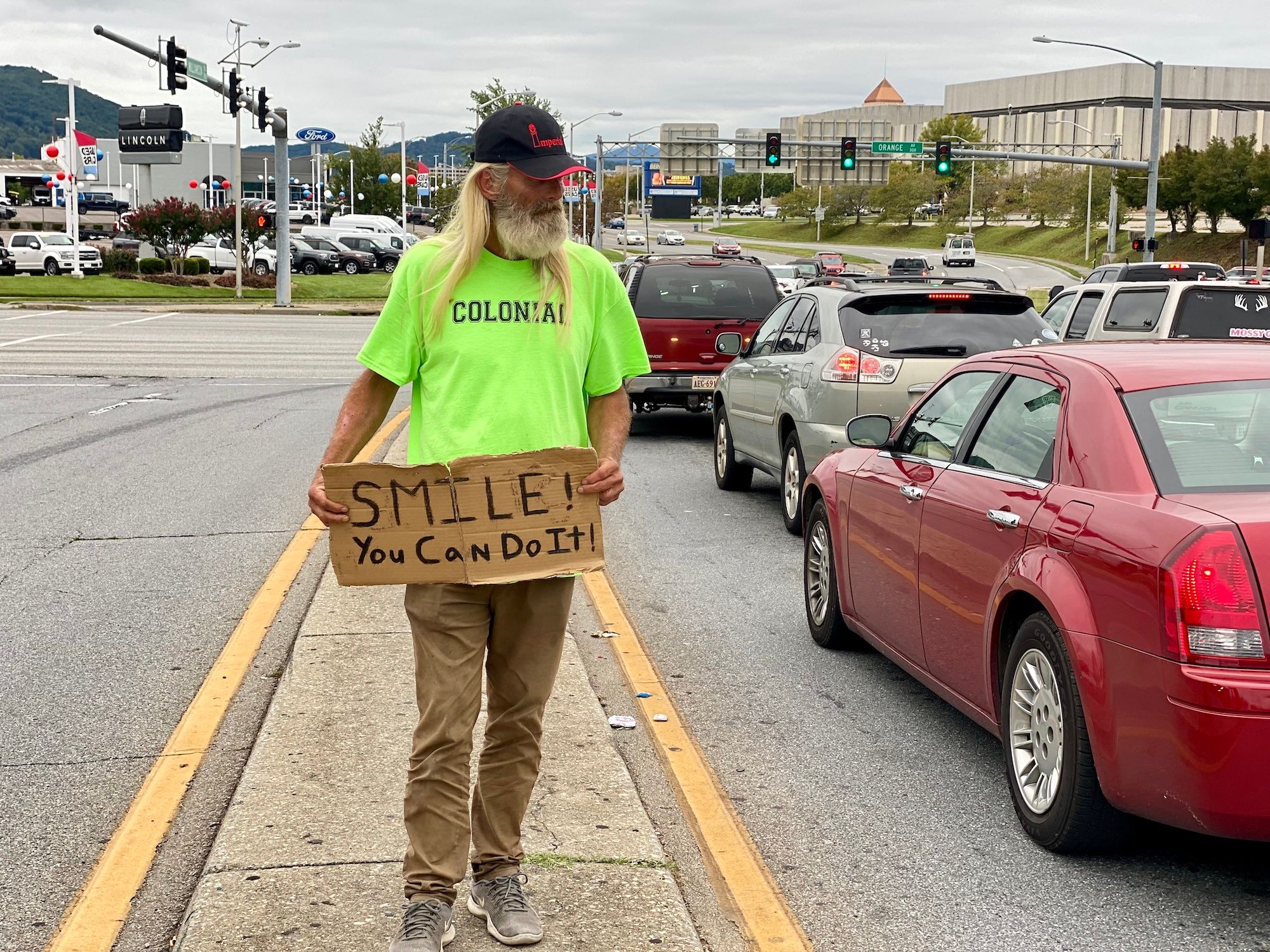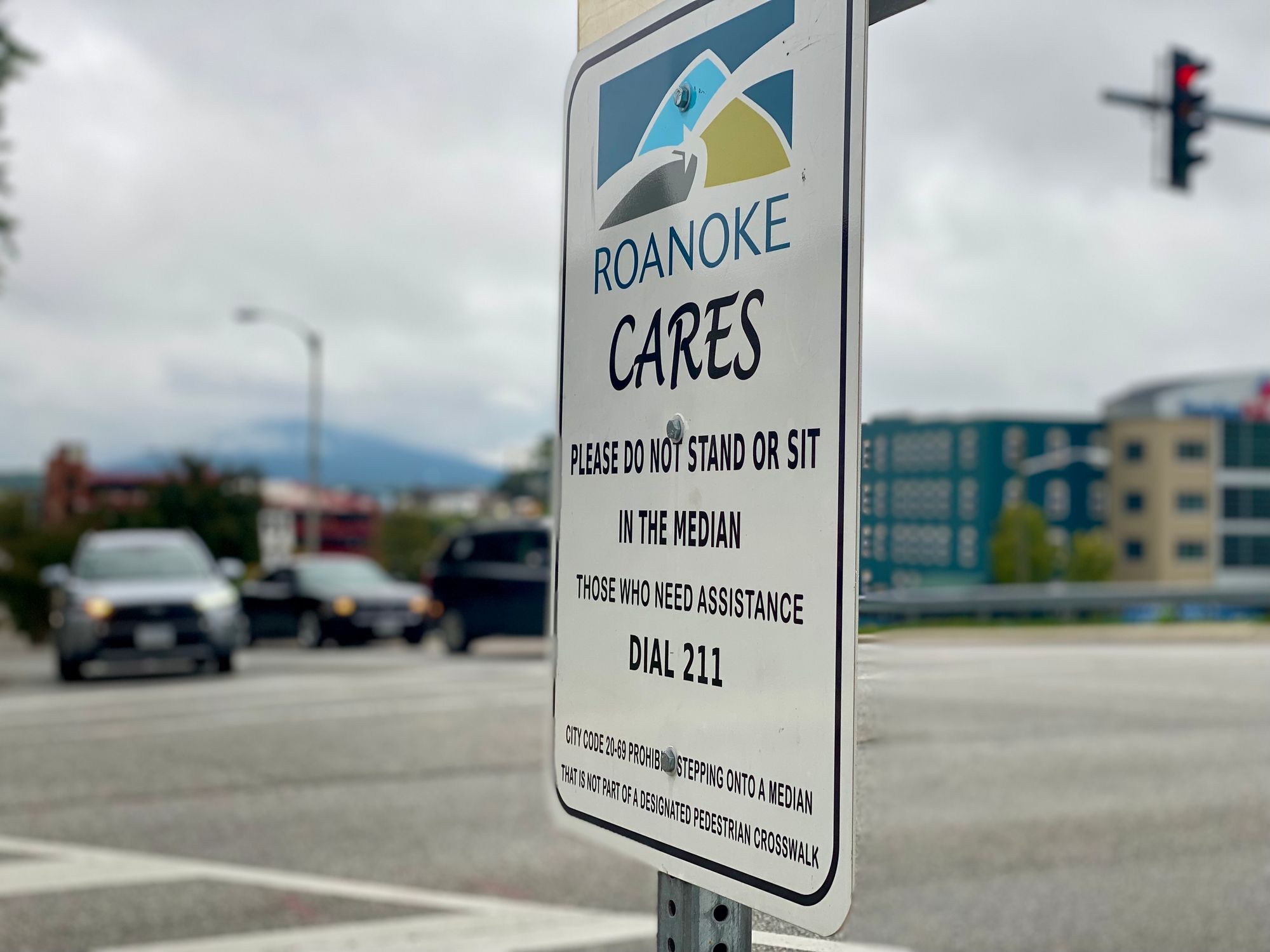New Roanoke City Law May Impact Panhandling. Just Don’t Call It Panhandling.
“I have ran out of patience with these people loitering and what they’re doing,” Mayor Sherman Lea said about those in street medians.

A new city law could affect an increasingly common sight in Roanoke: People asking for money while sitting or standing between lanes of zipping traffic.
Concerned about the safety of those loitering in narrow street medians, City Council this month banned anyone from being in a median that’s less than four feet wide.
Elected officials say they have received numerous citizen complaints about people panhandling amid traffic. Though a Council discussion about panhandlers preceded the latest action, officials have been quick to emphasize that the law does not target them.
“It is not addressing the panhandling issue,” City Attorney Tim Spencer told Council members earlier this month.
That’s because courts have found panhandling is protected under the Constitution. The law updates the city’s 2017 ordinance that prohibited people from stepping onto medians that aren’t part of crosswalks.
The new law is more narrowly tailored, in response to a 2020 court ruling on an Oklahoma City law, according to Spencer. In striking down the Oklahoma law as overly broad, the U.S. 10th Circuit Court of Appeals offered guidance on crafting a street median law.
Federal transportation design guidelines say six feet is the minimum width for a “pedestrian refuge,” which is why Roanoke City staff wrote in a report that the four-foot restriction “is well supported, while still allowing for ample areas for people to exercise their constitutional rights.”
Spencer said people are more than welcome to continue panhandling — just not in the medians.
“You can do it from the sidewalk. Perfectly legal to do it from the sidewalk,” he said.
But a visible uptick in people asking for money between passing traffic prompted Council to pass the ordinance.
“I have ran out of patience with these people loitering and what they’re doing,” Mayor Sherman Lea said at a July Council meeting. “I think we have to teach them a lesson. I’m not opposed to picking them up. Get in the car, you’re going downtown [to the jail] and let somebody decide.”
Lea said the issue was “getting out of hand” and that “enough is enough.”
“Somebody's going to get hit by a car, eventually that's going to happen,” the mayor said.
Three pedestrian deaths in 2016 led city officials to craft the initial street median law — also following a 2015 court ruling that put in legal jeopardy municipal bans on panhandling.
Police wrote hundreds of citations between 2017 and 2019 to people loitering in street medians, according to a Roanoke Times story at the time. It wasn’t clear how many of those people were asking for money.
But last year, police issued just three citations, according to police spokeswoman Caitlyn Cline. As of mid-July this year, police had handed out four tickets, she said.
Leonard Cleland, 60, said officers approached him recently at his usual spot at Williamson Road and Orange Avenue to tell him about the new law. Violation is a Class 2 misdemeanor, which can bring at most six months in jail and/or a $1,000 fine.

Cleland said he sometimes feels unsafe standing in the medians.
“I get anxious a little bit, about how they’re driving, how they’re acting,” he said.
That’s why he said he changed his signs — from less explicit requests for money to positive statements. His latest read, ‘SMILE! You Can Do It!”
Cleland said he reaches fewer motorists when standing on the sidewalk.
“The reason why I’m in the middle is because I’m on the driver’s side,” he said.
Cleland estimates he will average $20 in a day, but has made as much as $100.
“I’m trying to survive,” Cleland said. “Hopefully I won’t be doing it much longer.”
He said he’s waiting on a housing voucher and has been homeless in Roanoke for three of the last four years. Cleland said a niece who helped pay his way to Roanoke died of a drug overdose weeks after his arrival. Before then, he lived for 30 years in the Seattle area.
At a July Council meeting, Lea said he often sees people gathered at the intersections of Hershberger and Cove Roads.
“Let the people know, let those officers know, Saturday afternoon, go up there and I wouldn't be opposed to getting a van,” Lea said. “And if they don't go, load them in the van, take them down here somewhere.”
“It is certainly on our radar,“ City Manager Bob Cowell said. “It would be inappropriate to be selective in that enforcement. If it is a football team out there raising money with their coach, they’re as guilty of violating that ordinance as somebody who—”
“I agree. I agree,” Lea said. “And it's about safety.”
Cowell said the legal landscape makes enforcement tricky, and that the city can’t enforce against loitering or panhandling.
But under the city’s previous median law, Cowell said there was a recent “test arrest” made “in one of those instances to determine whether or not the courts were going to support that.”
The city manager later walked back that remark, with city spokeswoman Carol Corbin writing in an email that “the phrase ‘test arrest’ was misspoken.”
Cowell was referring to a specific event that happened about a year ago, according to Corbin and Cline.
Cline said that on July 29, 2022, James T. Forbes Jr., 64 of Roanoke, was issued a summons for standing in a median at the corner of Williamson Road and Orange Avenue. Online court records list a jail sentence of 10 days and a $100 fine, but also that 10 days were suspended. Court records also show Forbes was charged with the same violation on Aug. 6 of this year, and has a court hearing scheduled for early October.
The police department took a month to provide the information that Cowell referred to, with Cline saying she had hoped to get notes from the officer who wrote the ticket, which officers sometimes do “to remember more specific details in court.” Cline said the officer looked for the notes but could not find them.
Cline said police staff are updating and implementing training materials on the latest street median law. “We will enforce this ordinance as we do with any and all ordinances in the City of Roanoke,” she said in an email.

Vice Mayor Joe Cobb, in an interview last year, said he discourages residents from giving money to people panhandling.
He said the city has many organizations to which people can donate that provide meals, housing and other support services.
“I’m not convinced that the people who are panhandling are representative of our homeless community,” Cobb said then, “and may be more representative of a transient community that's just kind of stopping in and through Roanoke.”
In 2019, the city erected signs at street medians discouraging people from standing there and encouraging them to call 211, which connects people with social services.
Council members asked Cowell this month if the latest law will mean new or updated signs, which one member noted have been knocked down in some cases. City staff said the ordinance update may not warrant new signs but that they would look into it.
“We actually had to change what those signs were made of because they were being destroyed,” Cowell said.

